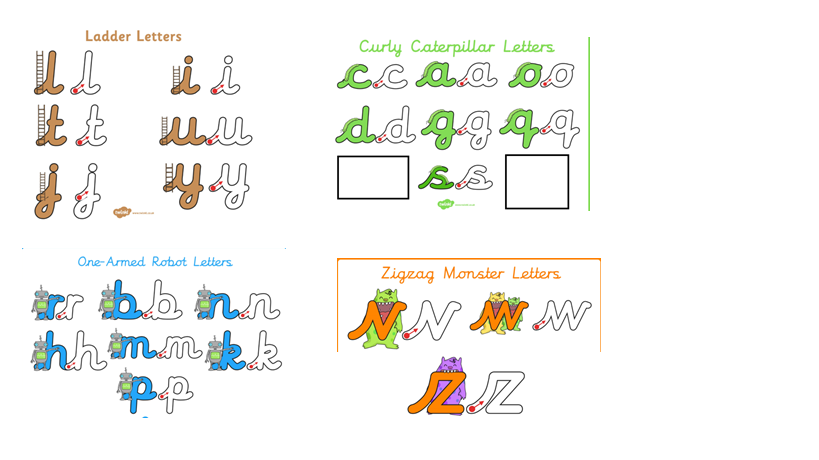Help your child to write
- As Continuous Cursive letters naturally join, children only have to learn this one font for lower case handwriting.
- Continuous Cursive letters flow rhythmically from left to right, aiding the speed and fluidity of the writing.
- The starting and finishing points for all Continuous Cursive letters are easier to remember (they all start on the line and, other than a few exceptions, all finish on the line), which can be especially helpful for children with specific learning difficulties.
- Teaching Continuous Cursive letters in family groups reinforces the shapes and directional pushes and pulls of the pencil needed to handwrite and can limit letter reversal issues, such as b and d.
- The transition to joined writing is simple and occurs sooner, allowing children to concentrate on the composition of the writing, because they no longer have to think about how to form the letters.
- Words are written in one set of movements, without the pen being taken off the paper, helping the motor memory store spellings. This is especially important for those irregular spellings which so many children find hard to commit to memory.
- Pre-writing stage – patterning
- Use one-handed tools and equipment
- Draw lines and circles using gross motor movement
- Manipulate objects with increasing control
- Begin to form recognisable letters
- Begin to hold a pencil correctly
- Have a secure pencil grip and know how to hold a pencil correctly
- Have opportunities to mark make the letter patterns that form the basis of pre-curisve style
- Form individual letters
- Form words based on letter groups e.g. s a t p i n
- Use flicks on the end of following letters
- Write so letters sit on the line
- Know ALL pre-cursive letters have the same starting point
- Produce letters of a consistent size and shape
- Know the following letter families, letters that belong to them and how to use this pattern to write pre-cursive letters;

- Know how to form ALL Capital Letters
- Summer Term - Introduce ascenders and descenders
Year 2
- Write using clear ascenders and descenders
- Understand NOT to join capital letters
- Introduce following letter joins;
Diagonal (bottom) letter joins;
No ascenders; in, im, ai, ee, er, cr, tr, dr
With ascenders; at, all, ah, ch, sh, th, cl, fl, sl, ck
With descenders; lp, mp, ip, ay
Diagonal (bottom) to ‘c’ shaped joins;
No ascenders; as, ea, ss
With ascenders; id, nd, ld, ed, sat,
With descenders; ig, ng,
Horizontal (top letter) joins;
No ascenders; on, om, oa, oo, oi, or, ou, ov, ow
With ascenders; /
With descenders; op, oy, og
Year 3
- Develop natural slant to handwriting
- To understand which letters, when adjacent to one another, are best left unjoined
- Be writing with a continuous cursive style
- Teach remaining diagonal and horizontal letter joins;
No ascenders; but, ine, ime, one, ome, wa, wo
With ascenders; ol, ot, oh, wh, oh, igh
With descenders; ing, igh, of, if
Bottom ‘e’ letter joins; be, her, ie, me, se,
Top ‘e’ letter joins; oe, re, ere, ure, ve, we

